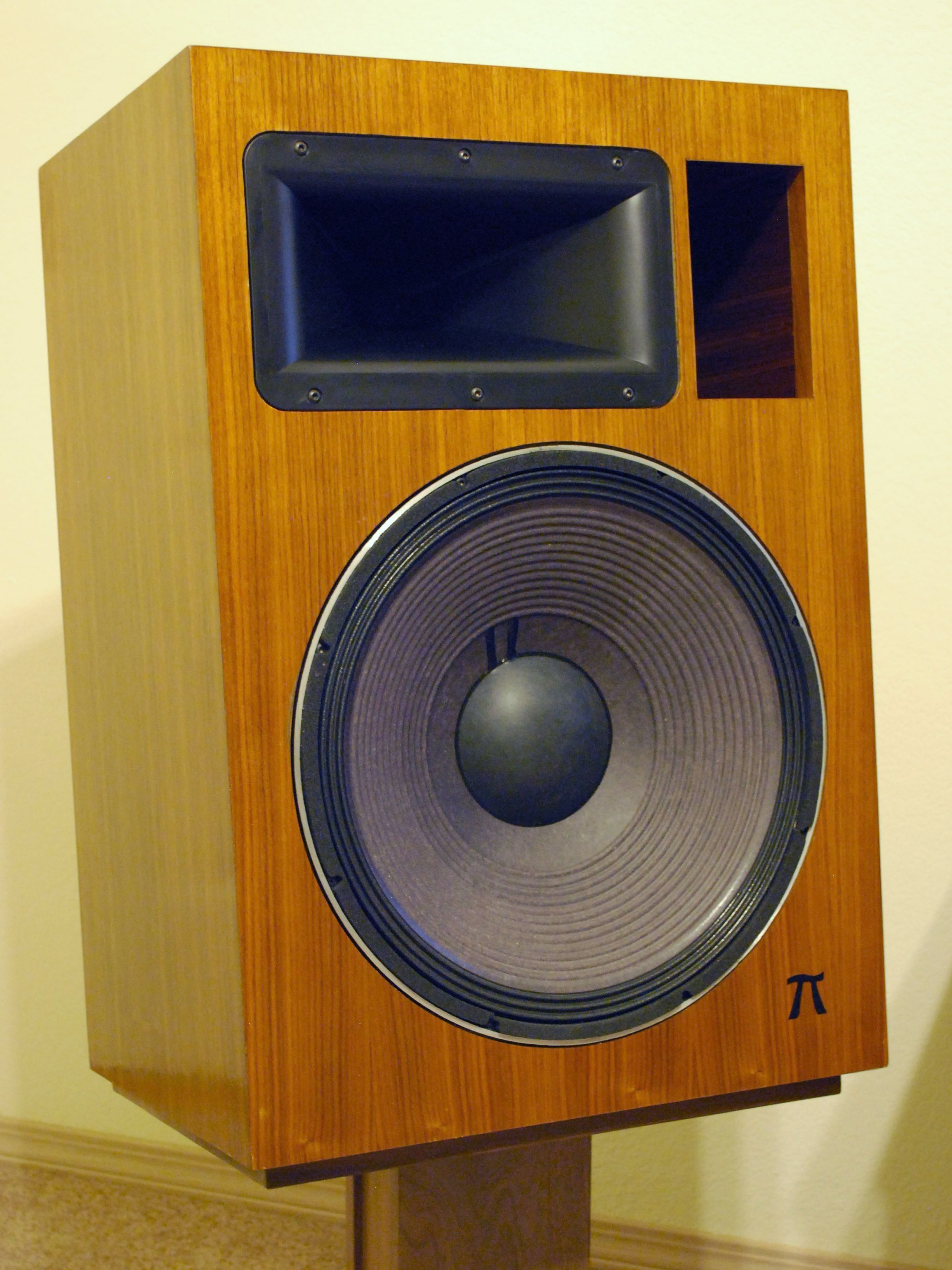|
Home » Sponsored » Pi Speakers » H290C Horn/Waveguide (Upgrade for the obsolete Eminence H290)
| Re: H290C Horn/Waveguide [message #75936 is a reply to message #75935] |
Thu, 21 March 2013 15:28   |
 |
 Wayne Parham
Wayne Parham
Messages: 18984
Registered: January 2001
|
Illuminati (33rd Degree) |
|
|
The crossover change is simple: Remove capacitor C1 and add a 16Ω resistor Rs across the compresion driver. Alternately, there is a position on the board for this resistor so you can install it there if you want instead of hanging it across the driver terminals. The Rs position on the board is right beside C1.
Here are some additional comments by Bill Epstein, followed by waveguide design philosophy information:
The finish of production waveguides is satin. There are actually samples of many different ABS blends shown earlier in this thread, and that's why it's hard to tell what the finish is. There was a glossy blend I tried early on, and another blend that was a little less glossy but still shinier than what we eventually settled on. The final ABS blend I chose creates a black satin finish. An example is shown in the photo below, a picture of a four π loudspeaker with H290C waveguide:
 four π loudspeaker
four π loudspeaker
As an aside, I chose the ABS mixture largely for its dimensional stability and consistency. The mold shop gave me samples of waveguides using several different mixtures to evaluate, some that were really shiny, some that were more dull. Some held dimensions well, others less so. I placed a priority on dimensional stability, and the ABS blend that is most consistent tends to be less shiny, more of a satin finish.
ABS plastic is a mix of three substances, styrene, acrylonitrile and butadiene. The proportions can vary from 15% to 35% acrylonitrile, 5% to 30% butadiene and 40% to 60% styrene. By varying the mixture, you can achieve different properties. Higher styrene tends to make a shinier finish, but we found a little bit less tends to make the device more dimensionally stable, more uniform through the hold and cooldown cycles of the molding process. Since we prioritize dimensional consistency over finish, that sets the material to one with a surface that I would characterize as being satin black.
If you want a different finish, the waveguides can be painted. Enamel adheres very well to these waveguides, so you can spray paint them to be glossy, flat or even a different color.
|
|
|
|
 |
|
H290C Horn/Waveguide
By: santos on Tue, 27 March 2012 03:48 |
 |
|
Re: H290C Horn/Waveguide
|
 |
|
Re: H290C Horn/Waveguide
By: Maxjr on Thu, 29 March 2012 13:26 |
 |
|
Re: H290C Horn/Waveguide
|
 |
|
Re: H290C Horn/Waveguide
|
 |
|
Re: H290C Horn/Waveguide
|
 |
|
Re: H290C Horn/Waveguide
By: Maxjr on Thu, 17 May 2012 16:37 |
 |
|
Re: H290C Horn/Waveguide
|
 |
|
Re: H290C Horn/Waveguide
|
 |
|
Re: H290C Horn/Waveguide
|
 |
|
Re: H290C Horn/Waveguide
|
 |
|
Re: H290C Horn/Waveguide
|
 |
|
Re: H290C Horn/Waveguide
By: zheka on Fri, 27 July 2012 19:58 |
 |
|
Re: H290C Horn/Waveguide
|
 |
|
Re: H290C Horn/Waveguide
By: zheka on Sun, 29 July 2012 08:32 |
 |
|
Re: H290C Horn/Waveguide
|
 |
|
Re: H290C Horn/Waveguide
By: mantha3 on Tue, 31 July 2012 11:17 |
 |
|
Re: H290C Horn/Waveguide
|
 |
|
Re: H290C Horn/Waveguide
By: mantha3 on Tue, 31 July 2012 14:28 |
 |
|
Re: H290C Horn/Waveguide
By: blvdre on Tue, 31 July 2012 15:35 |
 |
|
Re: H290C Horn/Waveguide
|
 |
|
Re: H290C Horn/Waveguide
|
 |
|
Re: H290C Horn/Waveguide
By: Maxjr on Thu, 16 August 2012 07:42 |
 |
|
Re: H290C Horn/Waveguide
|
 |
|
Re: H290C Horn/Waveguide
By: Maxjr on Thu, 16 August 2012 14:11 |
 |
|
Re: H290C Horn/Waveguide
By: gofar99 on Sat, 18 August 2012 14:35 |
 |
|
Re: H290C Horn/Waveguide
By: Maxjr on Wed, 22 August 2012 22:48 |
 |
|
Re: H290C Horn/Waveguide
|
 |
|
Re: H290C Horn/Waveguide
|
 |
|
Re: H290C Horn/Waveguide
|
 |
|
Re: H290C Horn/Waveguide
|
 |
|
Re: H290C Horn/Waveguide
|
 |
|
Re: H290C Horn/Waveguide
|
 |
|
Re: H290C Horn/Waveguide
|
 |
|
Re: H290C Horn/Waveguide
|
 |
|
Re: H290C Horn/Waveguide
|
 |
|
Re: H290C Horn/Waveguide
By: rkeman on Thu, 21 March 2013 14:20 |
 |
|
Re: H290C Horn/Waveguide
|
 |
|
Re: H290C Horn/Waveguide
|
 |
|
Re: H290C Horn/Waveguide
By: zheka on Tue, 23 April 2013 09:59 |
 |
|
Re: H290C Horn/Waveguide
|
 |
|
Re: H290C Horn/Waveguide
By: zheka on Tue, 23 April 2013 11:03 |
 |
|
Re: H290C Horn/Waveguide
|
 |
|
Re: H290C Horn/Waveguide
By: zheka on Tue, 23 April 2013 11:20 |
 |
|
Re: H290C Horn/Waveguide
|
 |
|
Re: H290C Horn/Waveguide
|
 |
|
Re: H290C Horn/Waveguide
|
 |
|
Re: H290C Horn/Waveguide - closest equiv. in 1.5" or 2"?
By: tubino on Thu, 17 September 2020 14:41 |
 |
|
Re: H290C Horn/Waveguide - closest equiv. in 1.5" or 2"?
|
 |
|
Re: H290C Horn/Waveguide - closest equiv. in 1.5" or 2"?
By: tubino on Fri, 18 September 2020 06:40 |
 |
|
Re: H290C Horn/Waveguide
|
Goto Forum:
Current Time: Wed Dec 03 14:35:09 CST 2025
|







